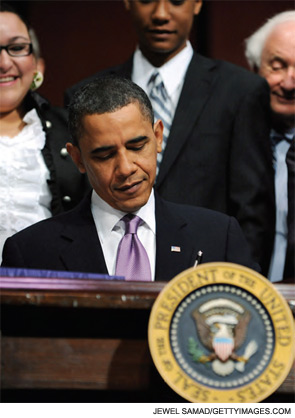The new health system reform law is expected to reduce the number of uninsured Americans by 32 million people, and that means more paying patients for physician practices. Many doctors, however, worry that the law’s lack of Medicare payment reform and medical malpractice caps will exacerbate a looming physician shortage. This raises questions about how successful the law will be in increasing health care access.
Explore This Issue
May 2010The Patient Protection and Affordable Care Act, signed into law on March 23, takes a gradual approach to expanding health insurance access. This tactic aims to avoid disrupting the insurance system, U.S. Department of Health and Human Services Secretary Kathleen Sebelius said in an April speech. The reforms will “fit together like puzzle pieces, each one leading logically to the next,” she said.

The first changes that could result in more insured patients are the development of state-based high-risk insurance pools for people who don’t have coverage due to preexisting conditions, health insurance tax credits to encourage small businesses to purchase coverage, and a number of insurance market reforms designed to protect and expand coverage. These provisions begin this year.
But the biggest reforms start in 2014. That’s when the mandate for individuals to buy insurance, income-related tax credits to help individuals and families afford coverage, and penalties for businesses that don’t provide insurance kick in. At the same time, state-based health insurance exchanges, which aim to provide affordable coverage options, are supposed get off the ground.
A mandatory expansion of Medicaid eligibility, which will allow very low-income childless adults to enroll, also is slated for 2014. The law will reduce the number of non-elderly uninsured Americans by 32 million by 2019, according to the Congressional Budget Office (CBO). Of that figure, about 16 million would get their coverage through Medicaid and the Children’s Health Insurance Program.
“Having 32 million more people insured is good for America,” said Michael M.E. Johns, MD, an otolaryngologist and chancellor of Emory University in Atlanta. “Those (physicians) who accept Medicaid and those who are seeing uninsured patients should see some benefit.”
The American Medical Association estimates that physicians provided $24 billion in charity care in 2008, much of it to uninsured patients. The law is not expected to eliminate the problem of the uninsured, however. The CBO estimates that 23 million non-elderly adults—about one-third of them illegal immigrants—will remain without coverage.
Leave a Reply